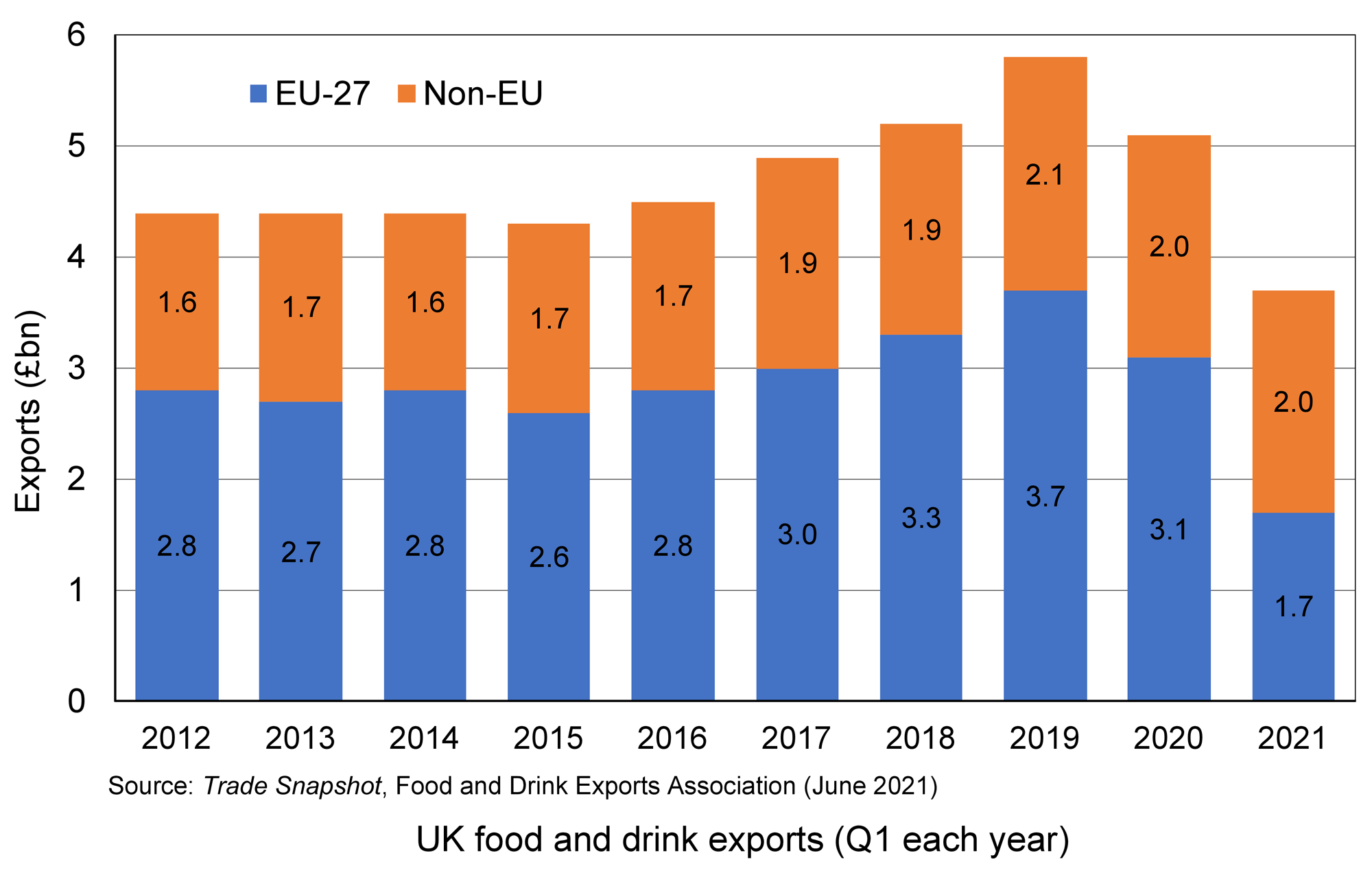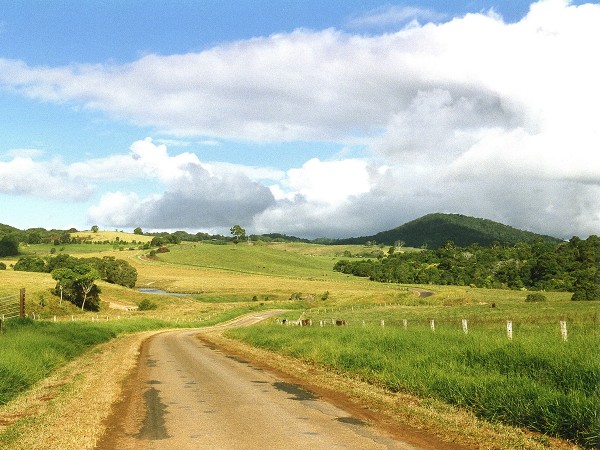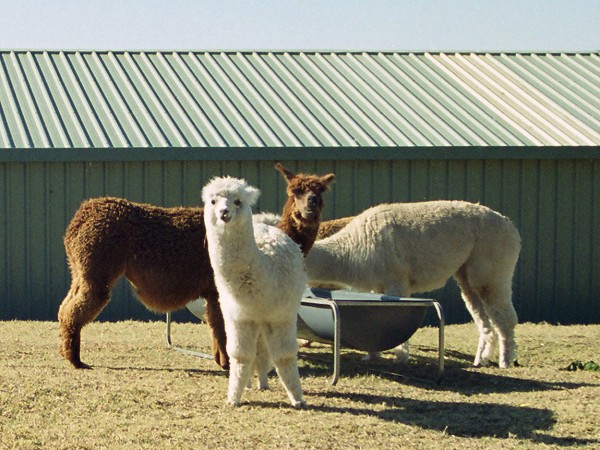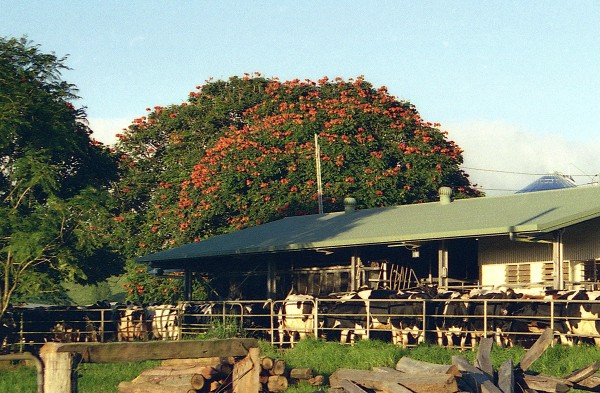 The effects of the Brexit trade deal are becoming clearer as new data are released. Figures for UK food imports and exports from and to the EU for the first quarter of 2021 have been published by the Food and Drink Federation. These show a 46.6% fall in UK food and drink exports to the EU in Q1 2021 when compared with Q1 2020, and a 55.1% fall when compared with Q1 2019 (before COVID).
The effects of the Brexit trade deal are becoming clearer as new data are released. Figures for UK food imports and exports from and to the EU for the first quarter of 2021 have been published by the Food and Drink Federation. These show a 46.6% fall in UK food and drink exports to the EU in Q1 2021 when compared with Q1 2020, and a 55.1% fall when compared with Q1 2019 (before COVID).
The dairy sector has been the hardest hit, with exports of milk and cream to the EU down by more than 90% and exports of cheese down by 67% compared with Q1 2020. Other hard-hit sectors have been soft drinks, fish, potatoes and chicken. (Click here for a PowerPoint of the following chart.)

The Brexit trade deal did not involve the imposition of tariffs on exports and imports. However, with the UK having left the EU single market, there are now many regulatory checks and a considerable amount of paperwork to be completed for each consignment of exports. These frictions are slowing down trade and adding to costs. Although food and drink exports are beginning to recover somewhat, the delays while formalities are completed will have a lasting dampening effect on exports to the EU, especially in the case of perishable goods, such as meat and fish.
Also, farming has been badly affected by labour shortages, with many EU citizens returning to the EU. For example, according to the British Poultry Council (BPC), 10 per cent fewer chickens had been produced since Easter because of worker shortages. Across meat processing generally, similar shortfalls are being recorded because of a lack of labour.
Articles
- UK food and drink exports to the EU almost halve in first quarter
- Brexit: the only way is down
- British food and drink exports to EU fall by £2bn in first quarter of 2021
- British food and drink exports to EU fall by 47% in first quarter
- Meat sector warns of Brexit production squeeze
- UK meat industry cuts production as Brexit labour shortages bite
BBC News (18/6/21)
EU Referendum, Richard North (5/6/21)
The Guardian, Lisa O’Carroll (18/6/21)
Independent, Celine Wadhera (18/6/21)
BBC News, Tom Espiner (18/6/21)
Financial Times, Delphine Strauss and Peter Foster (17/6/21)
Questions
- Find out how exports to the EU from sectors other than food and drink have fared since January this year.
- What are rules of origin? Why are they less likely to apply to food exports to the EU than to manufactured exports?
- Would you describe the Brexit trade deal (the EU-UK Trade and Cooperation Agreement) as a ‘free-trade’ deal? Explain.
- What are the particular difficulties for the food and drink sector in the Trade and Cooperation Agreement?
- Find out which parts of the food and drink sector have been particularly affected by labour shortages.


